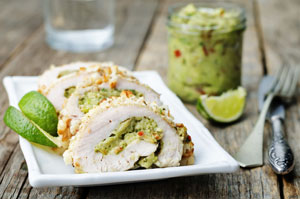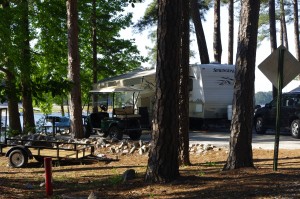 Baker Creek State Park
Baker Creek State Park
McCormick
Picnic area, shelters, grills, drinking water, pavilion, camp store, ranger station, volleyball, basketball, horseshoe pit, 10-mile hiking/biking trail, 2 boat ramps, fishing, 34 campsites for RVs or tents, restrooms, showers, dump station. (864) 443-2457, southcarolinaparks.com
Big Hart Campground & Recreation Area
Thomson
Beach, picnic sites, picnic shelter with large grill ($100/day), playground, boat ramp, dock, drinking water, 31 waterfront campsites with water and electricity ($30 per night), showers, flush and vault toilets, dump station. (706) 699-6258, bighartcampground.com
Broad River Park & Campground
Lincoln County
Single, double and triple campsites with water and electricity ($15-$27); boat ramp; restrooms; showers; fish-cleaning stations; dump station. Day use pass is $5 per car. Annual park pass $40. Located on the south bank of the Broad River where it joins the Savannah River on Clarks Hill Lake. (800) 405-1033, exploregeorgia.org
Bussey Point
Lincolnton
Beaches, boat ramp, picnic area, fire rings and grills, central well with hand pump for drinking water, hiking trails, mountain biking, more than 20 miles of well-marked wooded equestrian trails and natural surfaced roads for riding, 14 waterfront primitive campsites ($6 per night) large enough for horse trailers, highlines for tethering horses. Admission is $10. (864) 333-1100, exploregeorgia.org
Clay Hill Campground
Lincolnton
Picnic area, boat ramp, fishing, grill, fire pit, 10 campsites with water and electricity ($27 per night), 7 primitive campsites ($15 per night), showers, restrooms, dump station. $40 annual park pass. Located on the north side of Georgia’s Little River section. Shoreline offers excellent fishing for bluegill and other species of bream. (800) 405-1033, exploregeorgia.org
Elijah Clark State Park
Lincolnton
Beach, playgrounds, picnic areas, picnic shelters, trading post camp store, group shelters, miniature golf, canoe and kayak rentals, boat ramps, hiking trails, fishing pier, fish-cleaning station, educational programs, geocaching, 165 RV and trailer sites, pioneer camping, 10 walk-in tent sites, 20 cottages. (706) 359-3458, gastateparks.org
Hamilton Branch State Park
Plum Branch
Playground, picnic area, shelters, bike trail, hiking trail, boat ramps, fishing, 150 campsites (mostly waterfront) with water/electricity, 6 primitive group sites, restrooms, showers, dump station. (864) 333-2223, southcarolinaparks.com
Hawe Creek Campground
McCormick
Boat ramp, drinking water, 34 waterfront RV and tent campsites with water and electricity ($26-$28/night), showers, flush and vault toilets, trash collection. Five miles from Hickory Knob State Park. (864) 443-5441, recreation.gov
Hesters Ferry Campground
Lincoln County
Picnic area, grill, 16 waterfront RV campsites with water and electricity ($27 per night), 10 waterfront tent campsites ($15 per night), showers, restrooms, dump station. Located on Fishing Creek, which is known for some of the best fishing on the lake. (706) 359-2746, exploregeorgia.org
Hickory Knob State Resort Park
McCormick
Playground, swimming pool, restaurant, store and gift shop, hiking and mountain bike trails, boat ramp, dock, fishing, canoeing and kayaking, lakeside championship golf course, practice putting green, tennis, archery, skeet shooting, 16 cabins, 44 RV and tent campsites with water and electricity, showers, dump station, meeting rooms, convention center. (864) 391-2450, southcarolinaparks.com
Leroys Ferry Campground
McCormick
Picnic table, grill, fire ring, boat ramp with security light, 10 primitive campsites without water or electrical hookups ($10), rustic toilets, hand pump for drinking water. Pets allowed. (800) 533-3478, recreation.gov
Mistletoe State Park
Appling
Beach, picnic shelters, boat ramps, dock, canoe rentals, fishing, biking and hiking trails, cottages, fisherman’s cabin with private dock, beach house (seats 75), 93 RV, trailer and tent sites, 3 backcountry campsites, pioneer campground, walk-in campsites, planned park activities. Costs vary. $5 parking. (706) 541-0321, gastateparks.org
Modoc Campground
Modoc
Playground, picnic shelter, boat ramp, grills, drinking water, hiking trails, campground host, 68 waterfront RV campsites with water and electricity and 1 primitive campsite ($18-$54 per night), showers, flush and vault toilets, laundry facilities, dump station. Five miles from Thurmond Visitor Center. (864) 333-2272.
Petersburg Campground
Appling
Beaches, playground, picnic shelter, grill, fishing pier, boat ramp, hiking trail, 93 waterfront RV and tent campsites ($16-$24 per night), showers, drinking water, flush and vault toilets. Four miles from Thurmond Visitor Center. (706) 541-9464.
Plum Branch Yacht Club
Plum Branch
Beach, pavilions, boat ramp, ship’s store, Lakeside Grill restaurant, 63 waterfront RV campsites with water and electricity, primitive campsites, bathhouse, restrooms, covered and uncovered moorage and dry storage, fuel. (864) 443-3000, plumbranch.com
Pointes West Army Resort
Appling
Beach, playgrounds, picnic tables, pavilions, grill, fire ring, boat ramps, pontoon boat rentals, camper rentals, camping equipment rentals, country store, bathhouse, fishing, hiking with Bartram Trail access, 58 waterfront campsites with water and electricity ($20-$25 per night), 20 waterfront campsites with electricity only ($10 per night), primitive campsites ($7 per night), waterfront cottages, cabins and rustic motel suites, boat storage sheds and slips, camper storage, conference center. Military or government ID required. (706) 541-1057, gordon.armymwr.com
Raysville Campground
Thomson
Boat ramp, fire pit, grill, 55 campsites with water and electricity ($30), showers, TV/cable hookup, dump station. Within a mile of Amity Recreation Area, which has beaches, picnic shelters and ball field. (706) 699-6257, raysvillecampground.coms
Ridge Road Campground
Appling
Beach, playground, picnic area, drinking water, boat ramp, dock, grill, fire pit, 69 RV campsites with water and electricity, 6 tent sites ($12-$24 per night), showers, flush and vault toilets, dump station, trash collection, TV/cable hookup. (706) 541-0282, exploregeorgia.org
Soap Creek Marina Campground
Lincolnton
Beach, picnic area, convenience store, boat ramps, gas dock, hiking trails, restrooms, bathhouse, 30 RV campsites with water and electricity, 5 lakeside cottage rentals, slip rentals, electrical hookups, water. (706) 359-4100, soapcreekmarina.com
Wildwood Park
Appling
Beach, pavilions, playgrounds, mega boat ramp, docks, fishing, weigh-in station, riding trails, showers, restrooms, International Disc Golf Center with three 18-hole courses, 61 RV and tent campsites, camper storage. Admission is $3 per car, truck or motorcycle per day or $6 for a vehicle with a boat/watercraft or horse trailer. 1.5 miles from Pollard’s Corner. (706) 541-0586, columbiacountyga.gov.
Winfield Campground
Appling
Beach, playground, picnic area, grill, boat ramp, drinking water, 80 RV and tent campsites with water and electricity, showers, flush and vault toilets, dump station. Located on Little River near Mistletoe State Park. (706) 541-0147, exploregeorgia.org
_____
Day-Use Recreation Areas (No Campgrounds)
Amity Recreation Area
Lincoln County
Beaches and swim area, playground, picnic area, shelters, boat ramp, fishing pier, baseball field. Entrance fee is $5 per car. 8 a.m.-8:30 p.m. For shelter reservations, call (706) 359-4444, recreation.gov
Below Dam Recreation Area
McCormick County
Playground, picnic area, shelters, mini shelters, fishing pier, boat ramp, walking trail, restrooms, drinking water. No swimming or wading due to strong currents. Entrance fee is $5 per car. 8 a.m.-8:30 p.m. Across from Thurmond Visitor Center. (864) 333-1147, recreation.gov
Cherokee Recreation Area
Lincolnton
Beach, playground, picnic area, picnic shelters, boat ramp, dock, restrooms, drinking water, nature trails, facilities for handicapped. Entrance fee is $5 per vehicle. Thu.-Mon. 10 a.m.-7 p.m. Just across Little River Bridge on the right. (706) 359-5525 or (706) 359-5523, exploregeorgia.org
Clarks Hill Park Recreation Area
McCormick
Beach swimming areas, picnic areas, shelters, grills, drinking water, restrooms, boat ramp, fishing pier, fish cleaning stations, hiking trails. Entrance fee is $5 per car. 8 a.m.-8:30 p.m. (877) 444-6777, recreation.gov
Gill Point Recreation Area
Lincoln County
Picnic area, picnic shelter, drinking water, restrooms, boat ramp, dock. Entrance fee is $5 per car. 8 a.m.-8:30 p.m. (800) 533-3478, recreation.gov
Keg Creek Wildlife Management Area
Appling
Picnic area, canoe access, hiking trails, fishing, boating. Two miles from Pollard’s Corner. (706) 595-4222, exploregeorgia.org
Lake Springs Recreation Area
Appling
Swim beaches, playground, picnic areas, picnic shelters ($75-$125 per day), drinking water, restrooms, boat ramp, fishing pier, volleyball, horseshoe pits, walking and biking trails, Bartram Trail entrance point. Entrance fee is $5 per car. 8 a.m.-8:30 p.m. Three miles from Pollard’s Corner. For shelter reservations, call (800) 533-3478, exploregeorgia.org
Parksville Recreation Area
Parksville
Beaches, playground, picnic area, shelters, restrooms, boat ramp, ball field. Entrance fee is $5 per car. 8 a.m.-8:30 p.m. (800) 533-3478, exploregeorgia.org
West Dam Recreation Area
Appling
Beaches, playgrounds, picnic areas, shelters, restrooms, fishing, Bartram Trail entrance point. Entrance fee is $5 per car. 8 a.m.-8:30 p.m. One mile from Thurmond Visitor Center. (800) 533-3478, exploregeorgia.org
 There’s something about water in general – and the Serene18 in particular – that soothes the soul. The Serene18 covers 18 square miles on five local waterway trails where paddlers can leisurely while away a few hours in a kayak or canoe. Just don’t forget to enjoy the beautiful scenery and abundant wildlife along the way. The trails include:
There’s something about water in general – and the Serene18 in particular – that soothes the soul. The Serene18 covers 18 square miles on five local waterway trails where paddlers can leisurely while away a few hours in a kayak or canoe. Just don’t forget to enjoy the beautiful scenery and abundant wildlife along the way. The trails include:


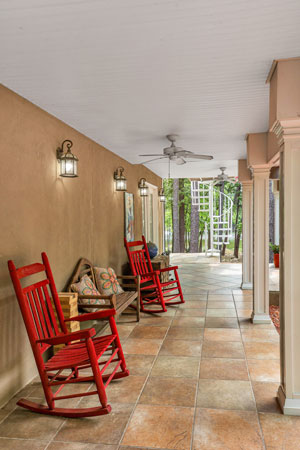
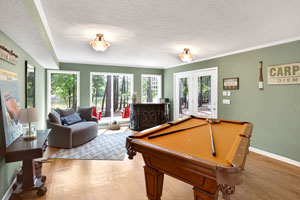



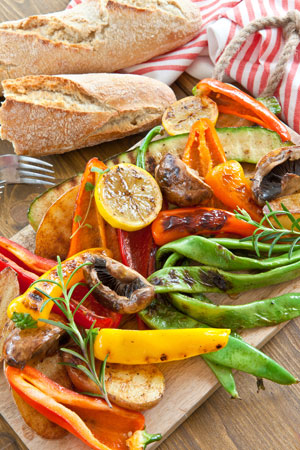

 Baker Creek State Park
Baker Creek State Park
 Bartram Trail – 18.5 miles
Bartram Trail – 18.5 miles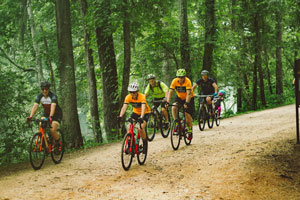

 Meaningful Mementoes
Meaningful Mementoes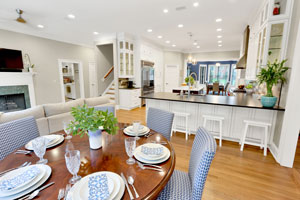 Furnishings include swivel chairs and a small writing desk in a corner. The desk, which came from Jill’s mother, has drawers on its sides and a flip-open top.
Furnishings include swivel chairs and a small writing desk in a corner. The desk, which came from Jill’s mother, has drawers on its sides and a flip-open top. Elegant Entertaining
Elegant Entertaining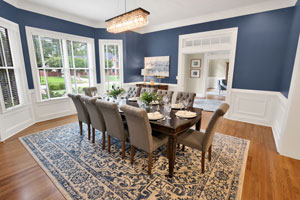 “I like to keep pieces that have some memory to them,” says Jill. “We can always find a spot for them.”
“I like to keep pieces that have some memory to them,” says Jill. “We can always find a spot for them.” “That was the first piece of furniture I ever bought for myself,” she says.
“That was the first piece of furniture I ever bought for myself,” she says. Outdoor Oasis
Outdoor Oasis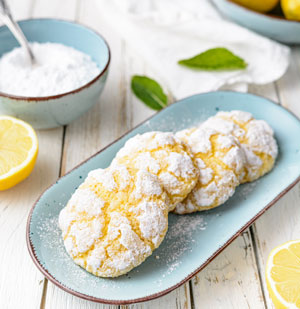

 In its second phase, the facility will add a putting green, a chipping green and a practice bunker. Brooks says these areas should be open by the end of June.
In its second phase, the facility will add a putting green, a chipping green and a practice bunker. Brooks says these areas should be open by the end of June.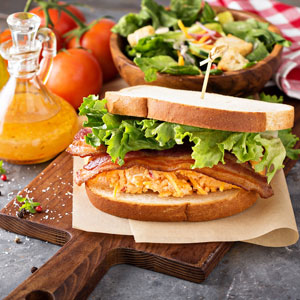
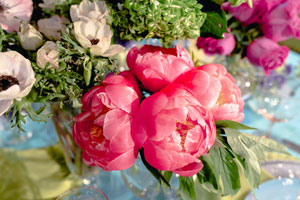
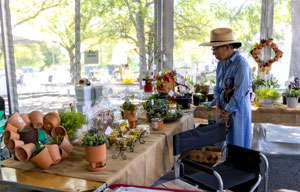 In Wandering Workshops, vendors will teach mini-sessions on various topics with pop-up demos. These quick sessions, located in the courtyard across from the speaker stage, will offer “how-tos” and valuable garden information.
In Wandering Workshops, vendors will teach mini-sessions on various topics with pop-up demos. These quick sessions, located in the courtyard across from the speaker stage, will offer “how-tos” and valuable garden information.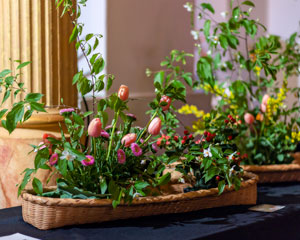 Tickets for the festival can be purchased by calling (706) 826-4700, online at sacredheartaugusta.org or at Sacred Heart and various locations in the area.
Tickets for the festival can be purchased by calling (706) 826-4700, online at sacredheartaugusta.org or at Sacred Heart and various locations in the area.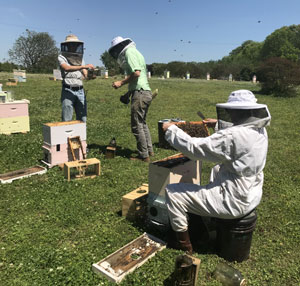
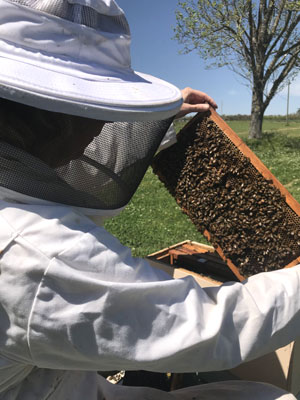

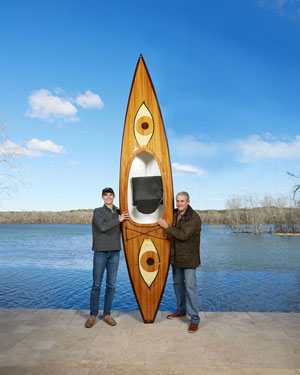
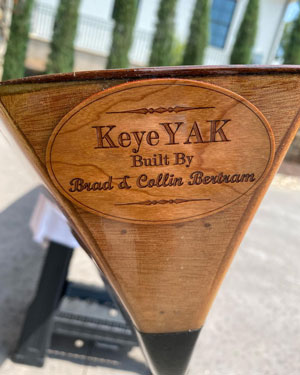 The hull is made of 8-inch mahogany plywood, and the deck consists of cedar and walnut strips.
The hull is made of 8-inch mahogany plywood, and the deck consists of cedar and walnut strips. “Psychology comes into play in boat building. You get very obsessive-compulsive about it,” he says. “You question if it’s good enough, or if you should start over. We learned not to set a deadline because then it becomes work, and that takes the fun out of it.”
“Psychology comes into play in boat building. You get very obsessive-compulsive about it,” he says. “You question if it’s good enough, or if you should start over. We learned not to set a deadline because then it becomes work, and that takes the fun out of it.” ‘Then You Go Fishing’
‘Then You Go Fishing’